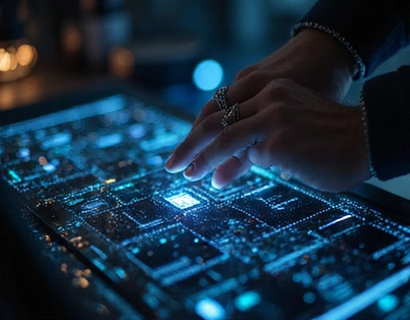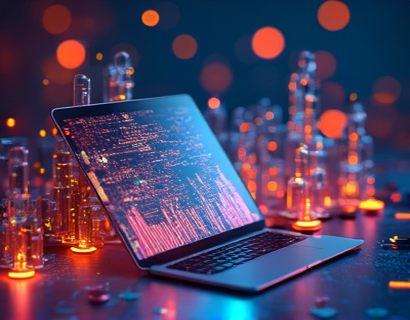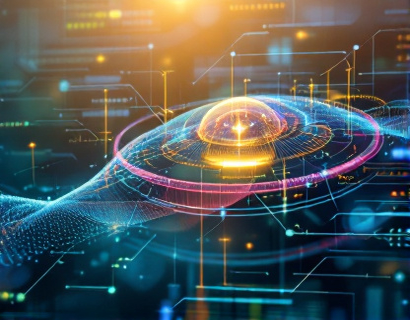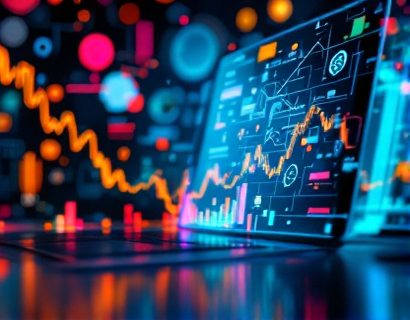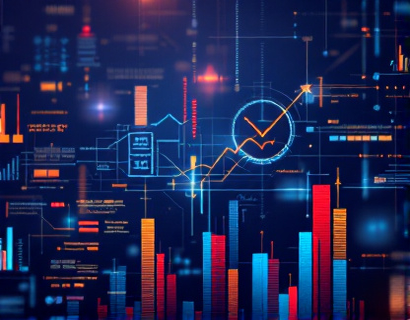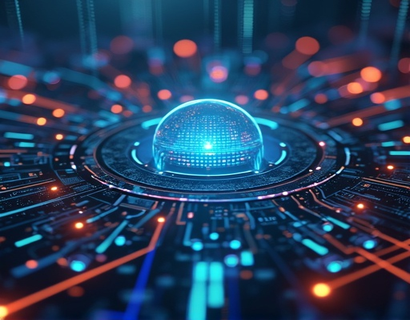AI and Crypto: A Synergistic Force Reshaping Digital Experiences
The intersection of artificial intelligence and cryptocurrency is giving rise to a new era of digital transformation, where seamless integration and advanced solutions are redefining user experiences and app interactions. This synergy is not just a technological curiosity but a powerful force that is set to revolutionize how we engage with digital services. As tech enthusiasts and innovators, understanding this convergence is crucial for anyone looking to stay ahead in the rapidly evolving landscape of connected technologies.
The fusion of AI and crypto brings together two of the most disruptive technologies of our time. Artificial intelligence, with its ability to learn, adapt, and make decisions, is enhancing the security, efficiency, and personalization of cryptocurrency applications. Conversely, the decentralized and secure nature of blockchain technology is providing AI with a robust framework for trust and transparency. This article delves into the multifaceted ways AI is transforming the crypto space, and how this integration is paving the way for more intuitive, secure, and user-friendly digital experiences.
Enhanced Security Through AI-Driven Cryptography
One of the most significant benefits of combining AI with cryptocurrency is the enhancement of security measures. Traditional cryptographic methods, while robust, are increasingly being challenged by sophisticated cyber threats. AI algorithms can analyze vast amounts of data in real-time, identifying patterns and anomalies that indicate potential security breaches. Machine learning models can adapt to new threats, continuously improving the security protocols of crypto platforms.
For instance, AI can be used to develop more sophisticated multi-factor authentication systems, reducing the risk of unauthorized access. Biometric verification, powered by AI, can offer a higher level of security by recognizing unique biological traits such as fingerprints or facial features. This not only makes transactions more secure but also more convenient for users, eliminating the need for remembering complex passwords.
Moreover, AI-driven security solutions can detect and mitigate fraudulent activities more effectively. By analyzing transaction patterns and user behavior, AI can flag suspicious activities and trigger alerts, allowing for prompt action to be taken. This proactive approach to security is essential in a landscape where cyber threats are becoming more sophisticated and frequent.
Optimized Transaction Processing with AI
Transaction processing is a critical aspect of cryptocurrency operations, and AI is playing a pivotal role in optimizing this process. Traditional blockchain networks often face issues with scalability and transaction speed, which can lead to delays and increased costs. AI algorithms can help streamline transaction processing by predicting network congestion, optimizing block sizes, and improving consensus mechanisms.
For example, AI can analyze historical data to predict peak usage times and adjust network parameters accordingly, ensuring smoother transaction flow during high-demand periods. Smart contracts, which are self-executing contracts with the terms directly written into code, can be enhanced with AI to automate complex decision-making processes. This not only speeds up transactions but also reduces the need for intermediaries, lowering costs and increasing efficiency.
Additionally, AI can optimize the routing of transactions across different blockchain networks, ensuring the most efficient path is taken. This is particularly important in a multi-chain environment where transactions may need to cross multiple blockchains to reach their destination. By intelligently routing transactions, AI can minimize delays and reduce transaction fees, making crypto transactions more accessible and cost-effective.
Personalized User Experiences Through AI
One of the most exciting applications of AI in the crypto space is the ability to deliver personalized user experiences. By leveraging machine learning algorithms, crypto platforms can gain deep insights into user preferences and behavior, tailoring services to meet individual needs. This level of personalization is transforming how users interact with crypto applications, making them more intuitive and user-friendly.
For instance, AI-powered recommendation systems can suggest crypto assets, trading strategies, and investment opportunities based on a user's historical data and market trends. These recommendations are not just generic suggestions but are dynamically updated in real-time, reflecting the latest market conditions. This not only enhances the user experience but also helps users make more informed decisions.
Personalization extends to the user interface as well. AI can adapt the layout and features of a crypto app based on user behavior, ensuring that the most frequently used functions are easily accessible. Voice-activated assistants, powered by AI, can further enhance this experience by allowing users to interact with their crypto portfolios hands-free, adding a layer of convenience and accessibility.
Decentralized AI Applications
The integration of AI with decentralized technologies is giving birth to a new class of applications known as Decentralized AI (DAI). These applications leverage the power of blockchain to create transparent, secure, and trustless AI models. The decentralized nature of DAI ensures that AI algorithms are not controlled by a single entity, reducing the risk of bias and manipulation.
One of the key advantages of DAI is data privacy. Since data is stored and processed on a decentralized network, users have greater control over their information. AI models can be trained on decentralized datasets, ensuring that sensitive information remains confidential. This is particularly important in the crypto space, where data privacy is a top concern for users.
Moreover, DAI can facilitate more equitable AI development by allowing a broader range of participants to contribute to the training and improvement of AI models. This decentralized approach can lead to more diverse and robust AI systems, as input from various sources is considered. The transparency of blockchain also ensures that the development and deployment of AI models are open to scrutiny, building trust among users.
AI-Enhanced Market Analysis and Trading
The crypto market is notoriously volatile, making accurate market analysis and timely trading decisions crucial for success. AI is revolutionizing this aspect by providing advanced tools for market analysis and automated trading. Machine learning algorithms can process and analyze vast amounts of market data, identifying trends and patterns that may not be apparent to human analysts.
Sentiment analysis, a subset of AI, can gauge the overall mood of the market by analyzing social media, news articles, and other textual data sources. This can provide valuable insights into market sentiment, helping traders make more informed decisions. AI-driven predictive models can forecast price movements with a higher degree of accuracy, giving traders a competitive edge.
Automated trading bots, powered by AI, can execute trades based on predefined strategies, operating 24/7 without the need for human intervention. These bots can adapt to changing market conditions, adjusting their strategies in real-time to maximize returns. The combination of AI and crypto trading is not only increasing efficiency but also making high-frequency trading more accessible to a broader range of investors.
Challenges and Considerations
While the integration of AI and crypto offers numerous benefits, it also comes with its own set of challenges and considerations. One of the primary concerns is the regulatory landscape. As AI and crypto continue to evolve, regulators are grappling with how to address the unique challenges posed by these technologies. Ensuring compliance with existing regulations while fostering innovation is a delicate balance that requires careful consideration.
Another challenge is the technical complexity involved in integrating AI with blockchain systems. Developing robust and scalable solutions that can handle the demands of real-time data processing and transaction execution requires significant expertise and resources. Additionally, the energy consumption associated with AI training and blockchain operations is a growing concern, prompting the industry to explore more sustainable solutions.
Data quality and availability are also critical factors. AI models rely on high-quality, diverse datasets to function effectively. In the crypto space, ensuring the accuracy and reliability of data sources is essential for the success of AI-driven applications. Moreover, the decentralized nature of crypto can sometimes lead to fragmented data, making it challenging to build comprehensive models.
Future Prospects
The future of AI and crypto is bright, with numerous opportunities for further innovation and growth. As technology advances, we can expect to see more sophisticated AI models that can handle even more complex tasks within the crypto ecosystem. The development of quantum computing, for instance, could significantly enhance the capabilities of AI, leading to breakthroughs in cryptography and data analysis.
Interoperability between different blockchain networks and AI platforms will also become more seamless, enabling a more integrated and cohesive digital experience. The rise of Web3, a decentralized internet powered by blockchain and AI, promises to redefine how we interact with digital services, offering greater control and ownership to users.
In conclusion, the convergence of AI and crypto is not just a technological trend but a transformative force that is reshaping the digital landscape. By enhancing security, optimizing transactions, personalizing user experiences, and enabling decentralized AI applications, this synergy is paving the way for a more secure, efficient, and user-centric future. As tech enthusiasts and innovators, embracing this evolution is key to staying at the forefront of the next digital revolution.











